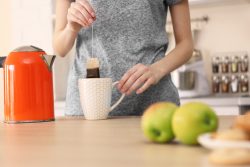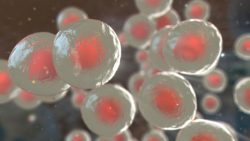 Recent studies reveal that popular tea brands might be a source of extensive microplastic exposure. Researchers have discovered that tea bags release millions of micro- and nanoplastics into your cup, potentially leading to significant ingestion of these particles with every sip of tea. The discovery of numerous micro- and nanoplastics in a consumable product like tea is particularly alarming.
Recent studies reveal that popular tea brands might be a source of extensive microplastic exposure. Researchers have discovered that tea bags release millions of micro- and nanoplastics into your cup, potentially leading to significant ingestion of these particles with every sip of tea. The discovery of numerous micro- and nanoplastics in a consumable product like tea is particularly alarming.
Certain plastics are absorbed more easily by digestive system cells and could potentially damage DNA. Tea bags that have an uneven surface tend to release more microplastic particles. Researchers conducted tests on three different tea bag brands to assess the presence of microplastics, small plastic fragments that do not decompose.
The study revealed that tea brewed using polypropylene tea bags, a widely used material, can release billions of particles per milliliter of tea. In comparison, tea bags consisting of cellulose paper and mesh nylon also released millions of plastic particles per milliliter.
In their experiment, the researchers replicated normal tea-brewing practices by steeping and stirring tea bags in water. They observed that all three types of tea bag materials shed microparticles during this simulated tea-making process. Polypropylene bags released the highest number of microparticles, while nylon bags released the fewest.
Upon isolating the plastic particles from the tea, they introduced them to bodily intestinal cells. The plastic particles were absorbed by the cells, indicating that microplastics might stay in the body following tea consumption. Once ingested, microplastics may accumulate in the tissues and organs of the gastrointestinal tract. From there, they could enter the bloodstream and circulate throughout the body, potentially reaching various other tissues and organs.
While research has associated chemicals used in plastic manufacturing with severe issues like endocrine disruption and cancer, the full health effects of consuming microplastics remain unclear to scientists.
Tea enthusiasts are advised to opt for products made from natural materials or consider using loose-leaf teas. Alternatives to traditional tea bags include employing a metal tea ball filled with loose leaves or using a French press.
To view the original scientific study click below:
Teabag-derived micro/nanoplastics (true-to-life MNPLs) as a surrogate for real-life exposure scenarios





